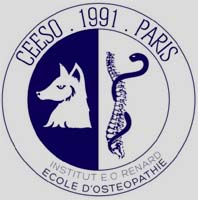Évaluation de l’impact physiologique de la stimulation du système nerveux autonome par une technique rythmique sur le sacrum, dans une population d’adultes sains
Étude expérimentale
METZ Julia

Méthode : Étude randomisée sur une population de sujet asymptomatique avec mesures répétées de la fréquence cardiaque et de la tension artérielle. Ces mesures ont été réalisées avec un oxymètre et un tensiomètre. Elles ont été relevé après stabilisation de la fréquence cardiaque au repos, 1 minute après la technique et 5 minutes après.
Résultats : 39 patients ont été recruté et distribué dans 3 groupes aléatoirement : un groupe traité, un groupe placebo et un groupe témoin. L’étude a montré une diminution significative de la fréquence cardiaque d’environ 13% (p=0,001), ainsi qu’une diminution de la pression artérielle systolique (p=0,003).
Conclusion : La réponse vagale produite par la technique sur le sacrum montre une relation en le TMO et le SNP ainsi qu’une relation entre le système nerveux parasympathique supérieur et inférieur. Des hypothèses biomécanique, neurologique et bioénergétique pourraient être l’explication de tels résultats.
Mots clés : système nerveux autonome, sacrum, fonction cardiaque, système nerveux parasympathique.
Abstract
Objective : distance effect of a sacrum rhythmic technique on the autonomic nervous system (ANS).
Introduction : The relationship between BMD and the SNA has long been recognized but is poorly explained . The parasympathetic nervous system is known to have a local effect , while the SNS would affect the entire body with all the communicating branches along the sympathetic trunk. In fact, today, no communicating branch has been demonstrated between the two centers of the SNP>. Thus, if an effect on heart function was found following the mobilization of the sacrum, as this might suggest that the SNP would also have it even systemic effect when only one of the two centers is stimulated, if that there would be an anatomical or chemical communication between the upper and lower parasympathetic centers.
Method : a randomized study on a population of asymptomatic patients with repeated measurements of heart rate and blood pressure. These measurements were performed with an oximeter and blood pressure. They noted following stabilization of the resting heart rate, 1 minute alter the technical and 5 minutes later. Results : 39 patients were recruited and randomly distributed in 3 groups : a group receiving a placebo and a control group. The study showed a significant decrease in heart rate of about 13 % (p = 0.001) and a decrease in systolic blood pressure (p = 0.003).
Conclusion : vagal response produced by the technique on the sacrum shows a relationship between TMO and SNP and between the upper and lower parasympathetic nervous system. Biomechanical assumptions , neurological and bioenergy could be the explanation for such results.
Keywords : autonomic nervous system, sacra , heart function, parasympathetic nervous system.



